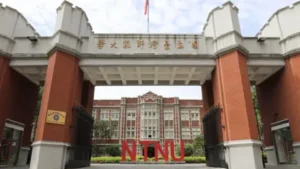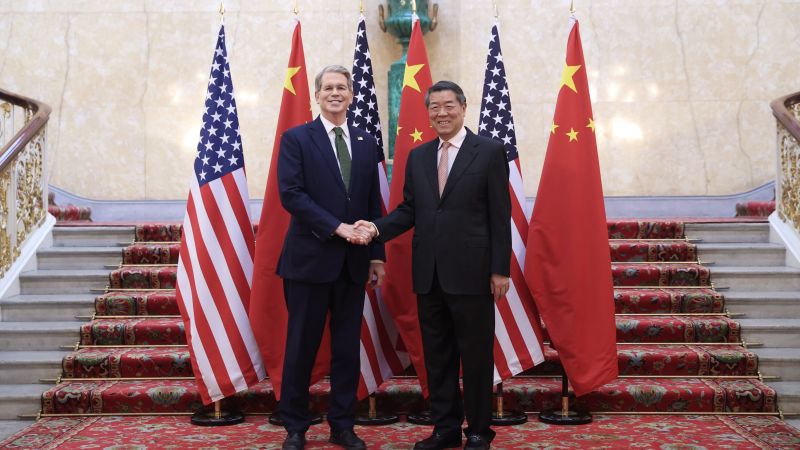At long last, the United States has officially reached a trade agreement with China, marking a critical juncture in the ongoing economic tension between these two economic giants. This moment, however, is underscored by its repetitive nature, as both nations have waded through varying levels of trade discussions in the past, with this recent development simply representing a reiteration of previous negotiations.
The process leading up to this renewed agreement has been rocky, characterized by a war of words that eventually escalated into mutual restrictions on key exports. In a meeting held this week in the United Kingdom, American and Chinese officials aimed to clarify and finalize what they had previously agreed upon during discussions in Geneva a month earlier. Despite such efforts, the reality of the trade truce is more complex than what appears on the surface.
On Tuesday night, negotiators for both sides claimed to have struck a deal to implement the consensus reached in May. This trade framework is expected to be presented to Donald Trump and Chinese President Xi Jinping for their respective endorsements. While this announcement has elicited a collective sigh of relief from businesses, consumers, and Wall Street investors alike—who have been feeling the pressure of burdensome tariffs—the underlying fundamentals of the trade relationship remain contentious.
In essence, the so-called trade truce serves more as a reversion to the previously unstable status quo rather than a substantial advancement. Tariff rates continue to hover at historically high levels, with significant barriers to exports persisting on both sides. For instance, the United States has not lifted its prohibitions on Chinese automobiles nor made any headway in exporting high-end AI chips—issues that remain crucial to the evolving technological landscape. In the vernacular of President Trump, the agreement has not ostensibly rendered America’s dealings with China significantly fairer than before.
The necessity for a trade deal became paramount, especially following Trump’s “Liberation Day” proclamations on April 2, which escalated tensions to a point where trade virtually came to a standstill. A staggering 145% tariff on a majority of Chinese goods complicated straightforward business transactions for U.S. companies that rely heavily on Chinese imports, making China—formerly the second-largest trading partner—an increasingly problematic partner.
Emerging from the negotiations, U.S. Treasury Secretary Scott Bessent remarked that prior tariff levels were unsustainable. The pivotal discussions on May 12 had seen delegates from both sides agree to significantly roll back the sky-high tariffs, sparking optimism among economists who began to revise recession forecasts downwards while simultaneously improving consumer confidence metrics.
However, the tone of the negotiations subsequently soured, with both countries lobbing accusations at one another over broken commitments from previously established agreements. The Trump administration had anticipated that China would lift constraints on critical rare-earth materials essential for various electronics, yet progress on that front has been slow, igniting frustration within U.S. government circles and resulting in additional export restrictions on American products to China.
China monopolizes rare earths, which are indispensable for manufacturing cars, jet engines, and certain medical treatments. Trump’s statements indicated that Chinese President Xi Jinping had agreed to begin exporting rare earth materials, yet experts expressed skepticism regarding the actual flow of these vital resources back into the U.S. markets.
Should both sides fulfill the agreement satisfactorily, it could quell outlandish forecasts regarding the trade war’s impact, which included predictions of widespread shortages reminiscent of pandemic-level disruptions. However, the U.S.-China economic standoff will likely continue, marked by mutual distrust and hostility.
Both the Trump and Biden administrations have maintained that Chinese businesses happily export cheap goods to the American market while imposing severe restrictions on U.S. entities operating within China. Moreover, intellectual property theft has been a point of contention longstanding throughout this complex trade relationship, with China consistently refuting such claims.
Trump’s initial term saw rising tariffs instituted under the guise of national security, a trend that has not only persisted but proliferated under Biden’s administration. The practices introduced have ushered in unprecedented trade barriers, including a ubiquitous 10% tariff on nearly all imported goods and a targeted 20% tariff on specific Chinese imports aimed at curbing the flow of illicit fentanyl into the U.S.
In addition, the White House’s elimination of the de minimis exemption term—previously allowing for tax-free imports of items valued under $800—has burdened small-scale ecommerce operations from major Chinese platforms like Shein and Temu.
These compounding tariffs and barriers have created a convoluted and uncertain trade landscape with America’s second-largest trading partner, generally inclined to drive up consumers’ costs. Despite the complications, some large companies, like Apple, can navigate these pressures better than others. Still, Apple noted that it too is facing significant cost burdens—estimating a quarterly increase of $900 million due to existing tariff levels, which are already substantial, but far from reaching the staggering 145% earlier imposed.
Companies like Boeing, conversely, have found themselves effectively barred from penetrating











